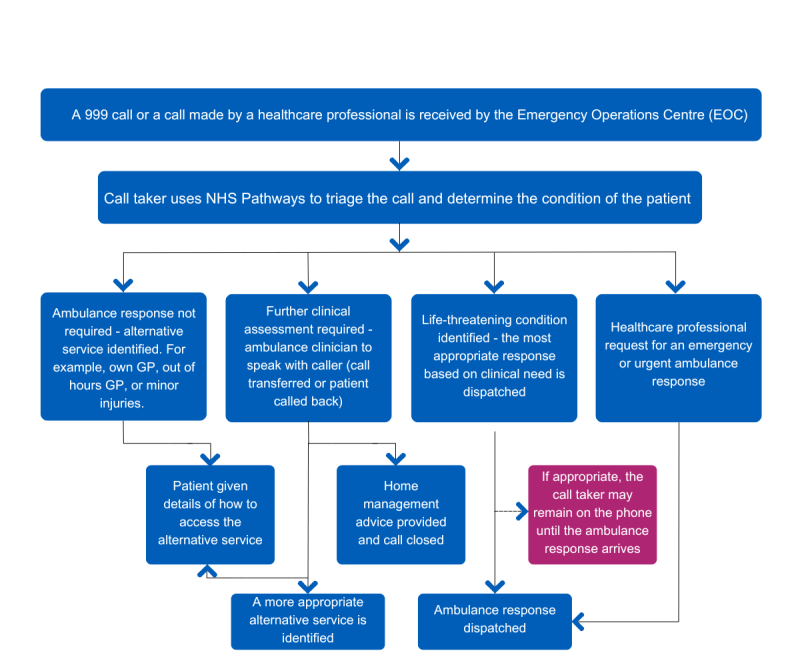Answering
999 Calls
What happens when you dial 999?
What happens when you dial 999?
When you ring 999 your call goes through to one of our Emergency Operations Centres (EOCs). Our trained emergency call takers receive nearly 862,000 calls every year. We use a specialist computer system called NHS Pathways to determine the condition of the patient (this is known triaging a patient) so we can send the most appropriate response based on their clinical need. This might be an ambulance, or a single responder paramedic.
Some patients who have minor ailments do not require an immediate emergency response or may not need an emergency response at all. We have clinically qualified staff in our EOCs who are able to take more details and provide further advice over the phone. If necessary they can make referrals to other community healthcare professionals such as GPs or community nurses, or to social care professionals, ensuring every patient always receives the most appropriate treatment for their need.
The chart below details what happens when we receive an emergency call.

The DVD uses two short scenarios to show people with learning disabilities:
The booklet provides useful information to help you when calling 999 or 111